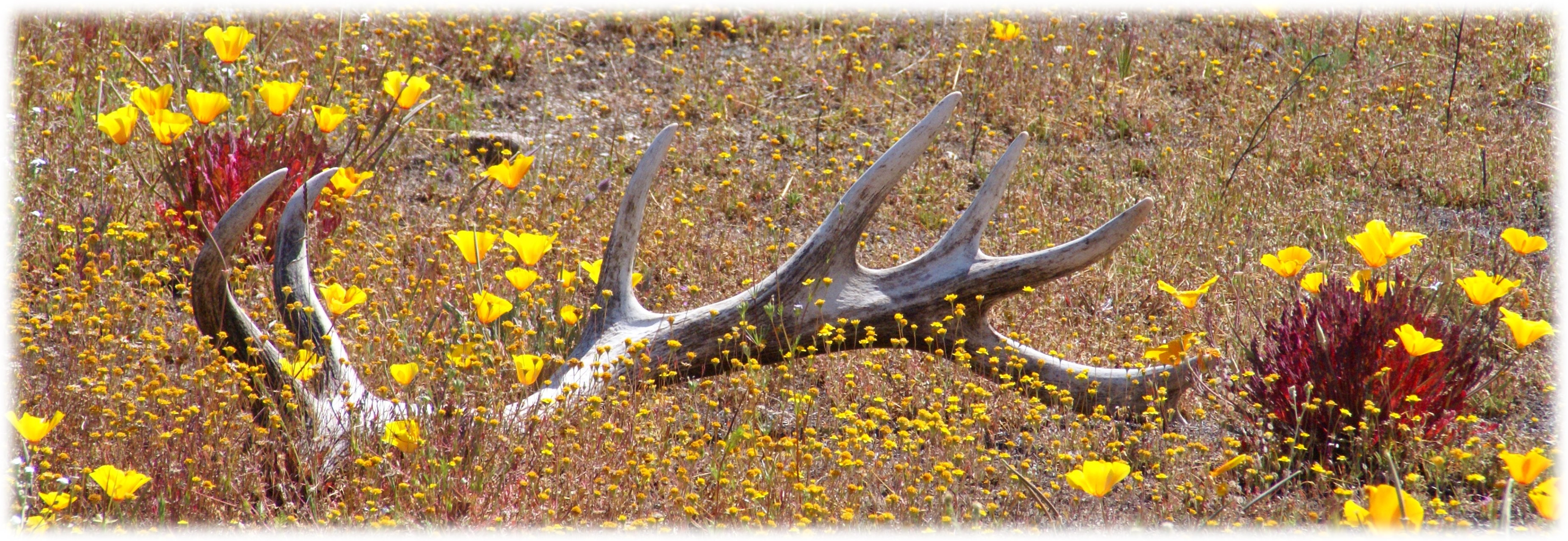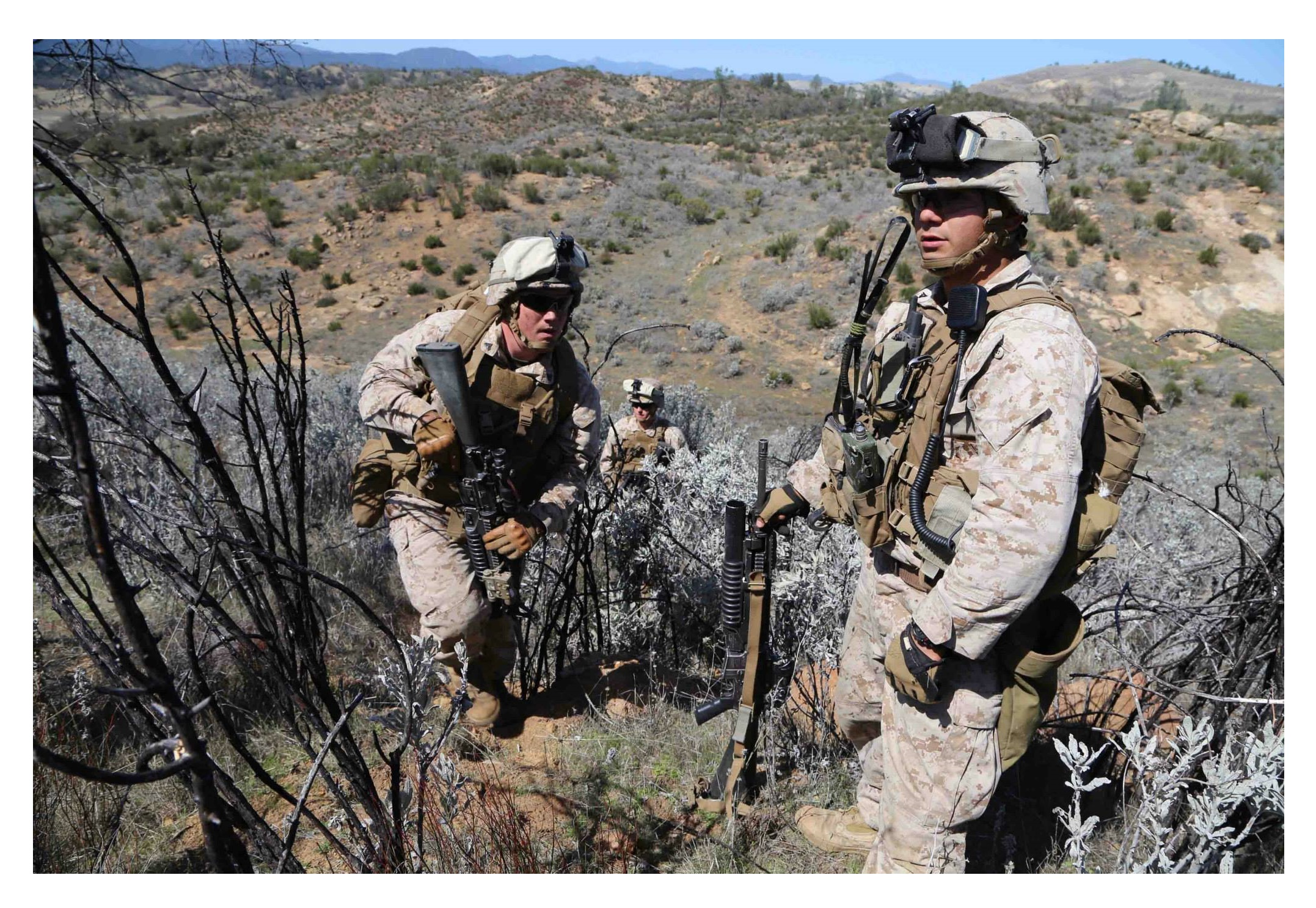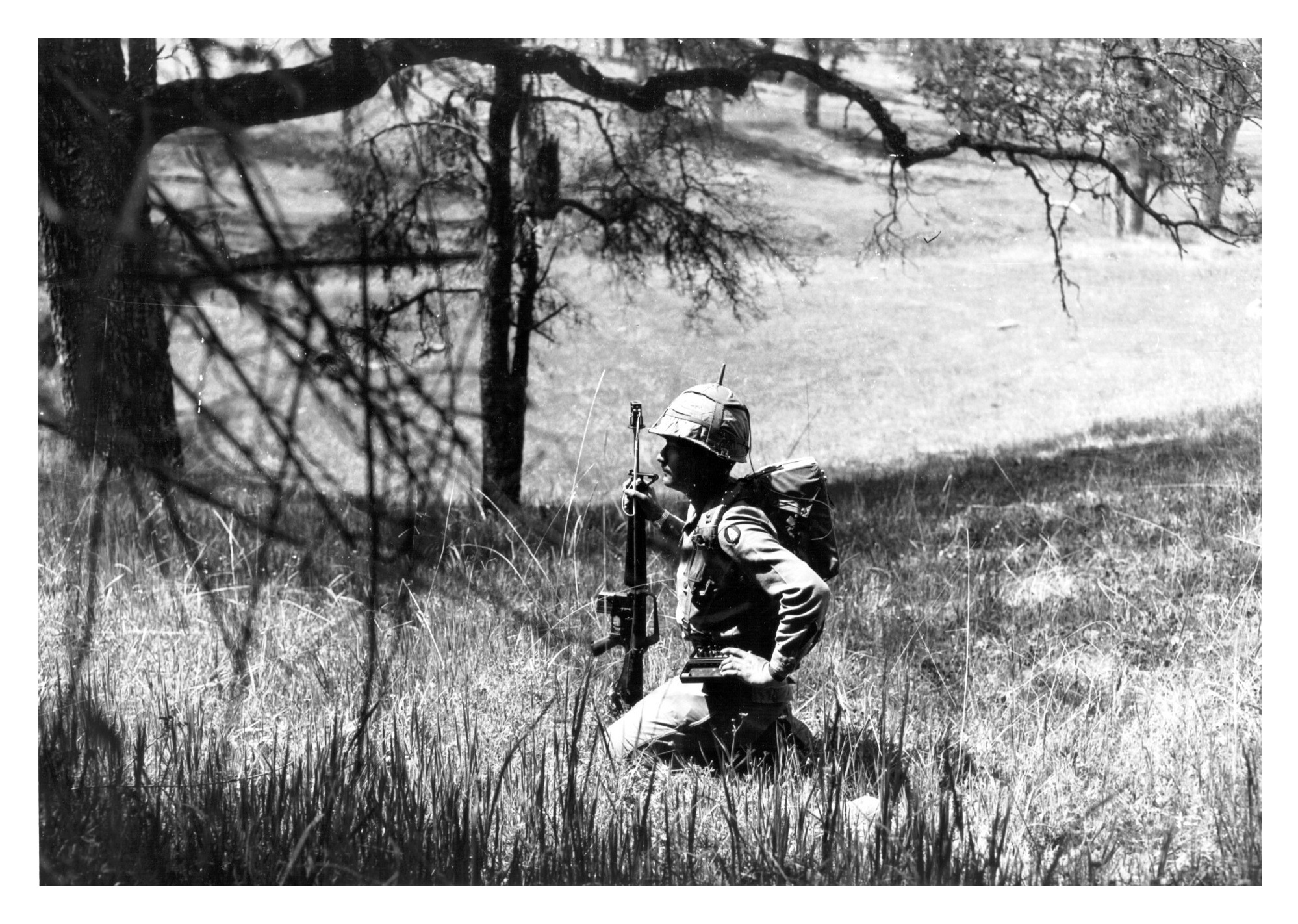Have you ever wondered about the places where our armed forces get ready for what they do? There is a spot in California, a really big one, that plays a very important part in getting our soldiers and their friends from other countries prepared. It is a place that many people might not know much about, yet it is quite significant for how our military operates, you know, making sure everyone is ready for whatever comes their way. This area, which we call Fort Hunter Liggett, is seen as a top spot for training all sorts of military groups, making it a key location for readiness.
This huge piece of land, stretching out over a great many acres, is more than just a military base; it is a vital training ground. It helps different parts of our own armed forces, plus groups from countries we work with, practice and get better at what they do. With its vastness, it provides a lot of room for various kinds of practice, from moving around in the field to working on specific skills that soldiers need. It is, in a way, a place where people learn to be their best for their important work, so it is almost a school of sorts for military operations.
Beyond its main purpose of helping military members train, this location also has some interesting features that many people might not expect. It has a public place to stay, a very old bridge with a lot of history, and weather that feels a bit like a warm, sunny vacation spot. This blend of serious training and natural beauty, really, makes it a unique place, offering a lot more than meets the eye for those who get to visit or work there.
- Renaissance Denver Downtown City Center Hotel
- Solina Golf Club
- Health New England
- China Lights Milwaukee
- Colorado Springs Airport Colorado Springs Co
Table of Contents
- General Hunter Liggett - A Name to Remember
- What Makes Fort Hunter Liggett So Special?
- Beyond Training - What Else Can You Do at Fort Hunter Liggett?
- Getting Around - Accessing Fort Hunter Liggett
- The Everyday Support at Fort Hunter Liggett
- What's Next for Fort Hunter Liggett?
General Hunter Liggett - A Name to Remember
The name "Fort Hunter Liggett" honors a very important person from our past. General Hunter Liggett was a leader who played a big part in a major world event, World War I, you know, helping guide many soldiers. He was in charge of a group called the 41st National Guard Division, and later, he led the first corps of the American Expeditionary Forces, which was a big deal for that time. He also had a very important job as a chief of staff, which meant he helped manage a lot of the day-to-day work for military operations, so he was quite a busy person.
His contributions were significant, helping to shape how things were done during a very challenging period. The fort carrying his name is, in a way, a lasting nod to his service and the leadership he showed. It is a reminder of the people who helped build the foundation for our military forces, and their dedication, you know, makes a lasting mark on history.
Personal Details
| Full Name | Hunter Liggett |
| Notable Command | 41st National Guard Division, First Corps of the American Expeditionary Forces |
| Key Role | Chief of Staff |
| Major Conflict | World War I |
What Makes Fort Hunter Liggett So Special?
You might be wondering, what really sets this place apart from others? Well, it is not just its size, though that is certainly a big part of it. Fort Hunter Liggett has a particular kind of setup that allows for many different types of training, which is quite important for preparing soldiers for various situations. It is, basically, a place where many different skills can be practiced, from working together in large groups to handling specific pieces of equipment, you know, making sure everyone is well-rounded.
- Pan Pacific Vancouver Vancouver Bc Canada
- Enloe High School
- Brian Crower
- Costco Staten Island
- Vicksburg National Military Park
The location itself, too, adds to its uniqueness. Being in Monterey County, California, gives it a certain kind of natural setting that is not always found at other training areas. This means that the people training there get to experience a wide range of environments, which helps them be ready for wherever they might go in the world, really, making it a very adaptable place for practice.
Fort Hunter Liggett - A Vast Space for Growth
This place is truly enormous, covering about 165,000 to 167,000 acres of land. To give you an idea, that is a lot of space for military groups to move around and practice their skills without feeling cramped. It is, in some respects, like having a whole small country dedicated to getting ready for important work. This large area allows for things like field maneuvers and live practice sessions, where soldiers can really get a feel for what they might face, so it is almost like a giant outdoor classroom.
The land itself is quite varied, too. You will find flat areas that are like wide-open fields, bordered by hills that are not too steep. This mix of terrain means that different kinds of training can happen all at once. Some groups might be practicing in the open, while others are working on skills in areas with more natural cover, which is that, quite helpful for making practice feel more like real-world situations. It is, basically, a very versatile piece of ground for all sorts of activities.
Back in 1940, a long time ago, this land was bought with a very specific purpose in mind. They needed a place to get soldiers ready for battles that were expected to happen in Europe during World War II. So, over 200,000 acres of local ranch lands, stretching between the Salinas River Valley divide and the Pacific Ocean, were purchased. This historical connection means that the land has been serving a crucial role for a very long time, you know, helping prepare people for significant events.
Who Trains at Fort Hunter Liggett?
When we talk about who actually uses this big training ground, it is a mix of people. Fort Hunter Liggett is a home base for the United States Army Reserve Command, which means a lot of the training here is for our Army Reserve members. But it is not just them; other parts of the Army also come here to practice. And, very importantly, groups from allied nations, countries we work closely with, also come to train here, so it is almost like an international meeting spot for military readiness.
One of the key groups that does a lot of work here is the 91st Training Division, which handles operations. They run what are called combat support training exercises, which are big practice events that help assigned groups work on their collective tasks. This is all about making sure they are ready to go if they need to be sent somewhere for a mission. They also, basically, provide training to joint forces, which means different branches of our own military working together, and combined forces, which includes our allies, too, ensuring everyone is on the same page.
While the number of people who live here permanently is fairly small, around 250 individuals, the population can grow quite a bit during training times. It can swell up to about 4,000 people, which means the place gets very busy with activity. This ebb and flow of people, really, shows how important the training here is, as many groups come through to sharpen their skills.
A large part of many practice sessions takes place here at Fort Hunter Liggett, and also at another spot called NTC. During these times, military members work on skills that help support combat, like moving and transporting supplies and materials. They also practice helping to support and keep the Army’s warfighters supplied with things like ammunition, fuel, and food. This kind of practice, you know, is very important for making sure everyone has what they need when it counts.
Beyond Training - What Else Can You Do at Fort Hunter Liggett?
It might surprise you to learn that Fort Hunter Liggett is not just for military training. This large area also offers some ways for the public to enjoy the outdoors. It is, actually, a place where people can go for hunting and fishing. This means that, with the right permits, you can spend time enjoying nature in a way that might not be possible in many other places, so it is almost like a hidden gem for outdoor activities.
If you are someone who likes to hunt or fish, or if you are an adult guest of someone who does, you will need a permit to be on the land. This helps manage who is on the property and makes sure everyone stays safe while enjoying the natural surroundings. There is, basically, a system in place through the iSportsman portal for handling these permits, and also for reporting any emergencies or illegal activities, you know, keeping things orderly.
The fort also has a public hotel, which is pretty interesting for a military post. This means that if you are visiting the area, you might even be able to stay right on the grounds. And then there is the historic bridge, a piece of the past that adds a touch of character to the place. The weather, too, is often quite pleasant, feeling a bit like a Mediterranean climate, with warm, sunny days, really, making it a nice spot to be.
And speaking of events, Fort Hunter Liggett has its own community celebrations. For example, they host something called "Freedom Fest," which is an early celebration for Independence Day. This kind of event brings people together and shows that the fort is also a part of the wider community, you know, connecting with its neighbors. It is, basically, a way for everyone to enjoy themselves and celebrate together.
Getting Around - Accessing Fort Hunter Liggett
If you are planning to visit Fort Hunter Liggett, whether for training or for public access activities like hunting, there are some steps you need to follow to get onto the property. Once your request to enter is looked at and approved, you will be given something called credentials. These are like your special pass, and you need to keep them with you at all times while you are on the grounds, so it is almost like having your identification ready.
For people who are sponsoring contractors, meaning they are helping contractors get their passes, there is a specific office they can visit. This office, called the VCC, is open from 7 a.m. to 4 p.m., Monday through Thursday. Going there can help speed up the process of getting those contractor credentials, which is that, very helpful for making sure things move along smoothly. It is, basically, a way to make the entry process more efficient for those who need it.
The fort is located in a somewhat central spot in California. It is about 150 miles south of a big city like San Francisco and about 250 miles north of another big city, Los Angeles. More locally, it is situated about 25 miles southwest of a place called King City. It is also next to another military area, Camp Roberts, which is that, quite convenient for coordinating activities. And it is about 86 miles south of what used to be Old Fort Ord, giving you a sense of its place on the map.
The Everyday Support at Fort Hunter Liggett
Behind the scenes of all the training and public activities, there is a whole system of support that keeps Fort Hunter Liggett running. For example, there is an Installation Legal Office, or ILO. This office provides important advice and guidance to the people in charge of the fort and their teams. They also help out at another training area called Parks Army Reserve Forces Training Area, which is that, quite important for making sure everything is done by the rules.
The fort also has programs in place to make sure everyone has an equal chance at jobs and opportunities. They provide things like RSS feeds for equal employment opportunity, which helps spread information about available positions. And, you know, they have ways for people to get in touch if they need help or have questions, showing a commitment to supporting their community members.
The people who work and live at Fort Hunter Liggett have a kind of motto, too: "Coyote Strong." This phrase, basically, shows a sense of community and resilience among those who are part of the Fort Hunter Liggett family. It is, in a way, a simple statement that captures the spirit of the people there, so it is almost like a team cheer.
Just like any community, there are leaders who guide the operations at Fort Hunter Liggett. For instance, Colonel McKenzie took on the role of commanding the fort on June 26, 2025. His own path in the military started quite a while ago, back in 1998, when he joined the Kentucky Army National Guard as an enlisted soldier. He later became an officer in 2001, after going through a program called ROTC, taking on a role in managing supplies and logistics, which is that, very important for military operations.
He also spent time on active duty with the 10th Mountain Division, and during that time, he was sent to places like Afghanistan and Iraq. This background, you know, gives him a lot of firsthand experience that is very helpful for leading a place like Fort Hunter Liggett, where training for real-world situations is the main focus. It is, basically, a testament to his dedication and service over the years.
What's Next for Fort Hunter Liggett?
Looking ahead, Fort Hunter Liggett will likely continue to be a very important place for military readiness. The training exercises held here are always adapting to what our armed forces need to be ready for. This means that the activities and the skills practiced here will keep changing to meet new demands, you know, making sure that the training is always relevant and effective.
The fort's vast size and varied landscape mean it will remain a valuable resource for many different types of practice, from large-scale maneuvers to more specific skill development. As the needs of our military evolve, Fort Hunter Liggett will, basically, be there to provide the space and the setting for soldiers to prepare. It is, in a way, a place that is always looking forward, ensuring that those who serve are well-equipped for whatever comes their way.
Related Resources:



Detail Author:
- Name : Colt Padberg
- Username : tommie71
- Email : eve80@harber.net
- Birthdate : 1999-10-20
- Address : 56997 Reinger Courts Suite 579 Port Sandy, KS 08895
- Phone : +1 (423) 338-6990
- Company : Koelpin PLC
- Job : Roof Bolters Mining
- Bio : Pariatur quidem voluptatum ipsum omnis. Quos libero ea dolores dolor itaque. Porro porro ea tempora. Iure facere voluptatem et earum et nesciunt sed non.
Socials
linkedin:
- url : https://linkedin.com/in/elmiraschimmel
- username : elmiraschimmel
- bio : Sint est odio voluptates maiores.
- followers : 4817
- following : 2784
facebook:
- url : https://facebook.com/schimmel2022
- username : schimmel2022
- bio : Aliquid et laboriosam et eligendi aut.
- followers : 6127
- following : 2910
tiktok:
- url : https://tiktok.com/@elmira_real
- username : elmira_real
- bio : Omnis saepe et nemo earum non maxime quas. Modi ut impedit enim sit recusandae.
- followers : 3199
- following : 2250